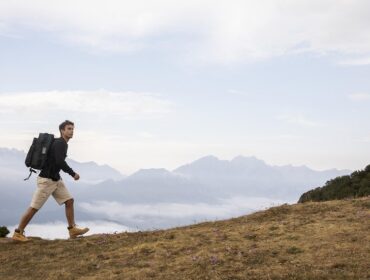Hiking trail guides can be the first step toward transforming an ordinary day into an extraordinary adventure. Hiking is not just a journey through the wilderness; it’s a walk into your soul. Nature has a way of reminding us what it means to feel truly alive. But where do you begin? Finding the right hiking trail guide can be the first step toward transforming an ordinary day into an extraordinary adventure.
Whether you’re an experienced hiker or someone planning a gentle stroll, this guide will help you choose the perfect trail, gear up, and stay safe along the way. Let’s dive in together, and soon you’ll be ready to hit the trail with confidence.
Hiking Tips for Beginners: Finding Your Perfect Hiking Path
A great hike starts with a plan. Begin by exploring hiking trail guides and maps that offer an overview of different trails, including their lengths, difficulty levels, and scenic highlights. Taking the time to plan ahead helps ensure you get the most out of your hiking experience and stay safe.
If you’re looking for family-friendly hiking trails, opt for routes that are relatively flat, with clearly marked paths and shorter distances. Many guides also include user reviews and photos, giving you an idea of what to expect and helping you decide which trail best fits your interests. It’s always helpful to know what others have experienced on the trail-did they find a hidden waterfall or a beautiful lookout point? These firsthand experiences can help you find the perfect spot for your group.
Choosing the Right Trail for You

Selecting the right trail begins with an honest assessment of your fitness level and available time. Difficulty ratings for trails often range from easy to strenuous. An easy hike features gentle slopes and shorter distances, while a strenuous trail might involve steep climbs, rugged terrain, and longer distances.
If you’re new to hiking, start with easier trails to gradually build your stamina. There’s no rush-hiking is about enjoying the experience, not racing to the finish. It’s also important to plan your hike around your estimated pace, allowing time for breaks to rest and appreciate the surroundings. Starting early in the day helps you avoid hiking in the dark and reduces the risk of getting caught in unpredictable weather.
As you progress and gain experience, you can challenge yourself with longer and more difficult hikes, each hike is a step toward discovering more about yourself, pushing your boundaries, and embracing the natural world.
Hiking Essentials: Gear Up Right

The right gear can make all the difference on a hike for hiking for beginners. Start with a sturdy pair of hiking shoes, well-fitting boots with ankle support and good grip are essential for staying comfortable and avoiding injuries. Comfort is key-blisters can turn a fun hike into an ordeal.
Next, choose a well-fitted backpack to carry essentials like water, snacks, a first aid kit, and extra clothing layers. A reliable rain jacket or insulated jacket will keep you protected if the weather turns. Being prepared for sudden changes in weather can mean the difference between a memorable adventure and a miserable trek.
Navigation tools are also key. While phone GPS is helpful, always carry a compass and a physical map, as batteries can die and remote areas may lack cellular coverage. Additionally, having a headlamp is always a good idea, especially for longer hikes, in case you find yourself on the trail later than planned. Imagine walking through a dense forest with only moonlight-it’s much better to have a headlamp handy.
Bring plenty of water. Dehydration can sneak up on you, especially in warmer weather or during strenuous hikes. A hydration bladder or water bottles are must-haves. Don’t forget some high-energy snacks like trail mix or granola bars to keep your energy up throughout the hike.
Hiking Advice for Beginners: Facing Trail Challenges
Hiking has its challenges, and there are different levels of hikers, but with the right techniques, these levels can be manageable. When hiking uphill, maintain a steady pace with short, consistent strides to save energy. It’s not about how fast you get to the top but how well you conserve your energy for the entire journey. Pause to catch your breath, admire the views, and take in the peaceful surroundings.
For downhill sections, keep your knees slightly bent to absorb the impact and maintain balance. Use trekking poles if you have them-they can take a lot of pressure off your knees and help with stability. When trails get rocky or uneven, watch your footing, and take your time. Remember, it’s always better to move slowly and steadily than to risk a fall.
Take regular breaks to let your muscles recover, a well-paced hike is more enjoyable and safer. If you feel tired, don’t hesitate to rest-overexertion can lead to injuries or make it difficult to complete your hike. Listen to your body and know when to take it easy.
Staying Safe on the Trail
Safety should always be a priority. Before heading out, let someone know your plan-where you’re going, the trail you’re taking, and when you expect to return. This simple step can be crucial if you run into any trouble.
Wildlife encounters can be thrilling, but it’s important to keep your distance and never feed animals. Respecting wildlife means allowing them to live undisturbed. Carrying a basic first aid kit is also essential for handling minor injuries like blisters or scrapes. Pack bandages, antiseptic wipes, and any personal medications you might need.
Stay aware of weather conditions. Sudden changes can occur, especially in mountainous areas. Pack an extra layer or a rain jacket to be prepared for unexpected shifts. The most important rule of hiking? Listen to your body. If something doesn’t feel right, turn back. The goal is to enjoy the journey, not to push yourself beyond your limits.
Leave No Trace
Hiking is all about connecting with nature, and with that connection comes responsibility. Follow the leave no trace principle by staying on marked trails, avoiding picking plants, and packing out all your trash. The beauty of the outdoors depends on each of us doing our part to protect it.
Take only photos; leave only footprints. Respect wildlife by keeping your distance and avoiding sudden movements that might startle animals. When crossing streams, use bridges if available; stepping on fragile aquatic environments can have a significant impact. Our responsibility as hikers is to keep these spaces as pristine as we found them.
Start Your Adventure Today
The beauty of hiking trail guides is that they open doors to endless possibilities. Each of the best hiking starting essentials is an invitation to explore a new path, a new mountain, a hidden valley, or an enchanted forest. Use these guides to plan your next hike, considering your skills and the experience you are seeking-whether it’s a casual nature walk, a challenging trek up rocky ridges, or a peaceful multi-day backpacking adventure. With a map in hand, proper preparation, and a love for adventure, the great outdoors become an endless playground waiting for your footprints. So grab your gear, choose your trail, and set off on a journey where every step brings you closer to nature’s beauty-one trail at a time.
Conclusion
Hiking is more than just a physical activity; it’s an experience that enriches the soul and gives you memories that last a lifetime. Hiking trail guides are invaluable companions that ensure you are prepared, knowledgeable, and ready to explore the wonders of nature confidently. From choosing the right trail to packing your gear, every aspect is vital for a successful hike. Start small, respect nature, and build your confidence with each hike.





